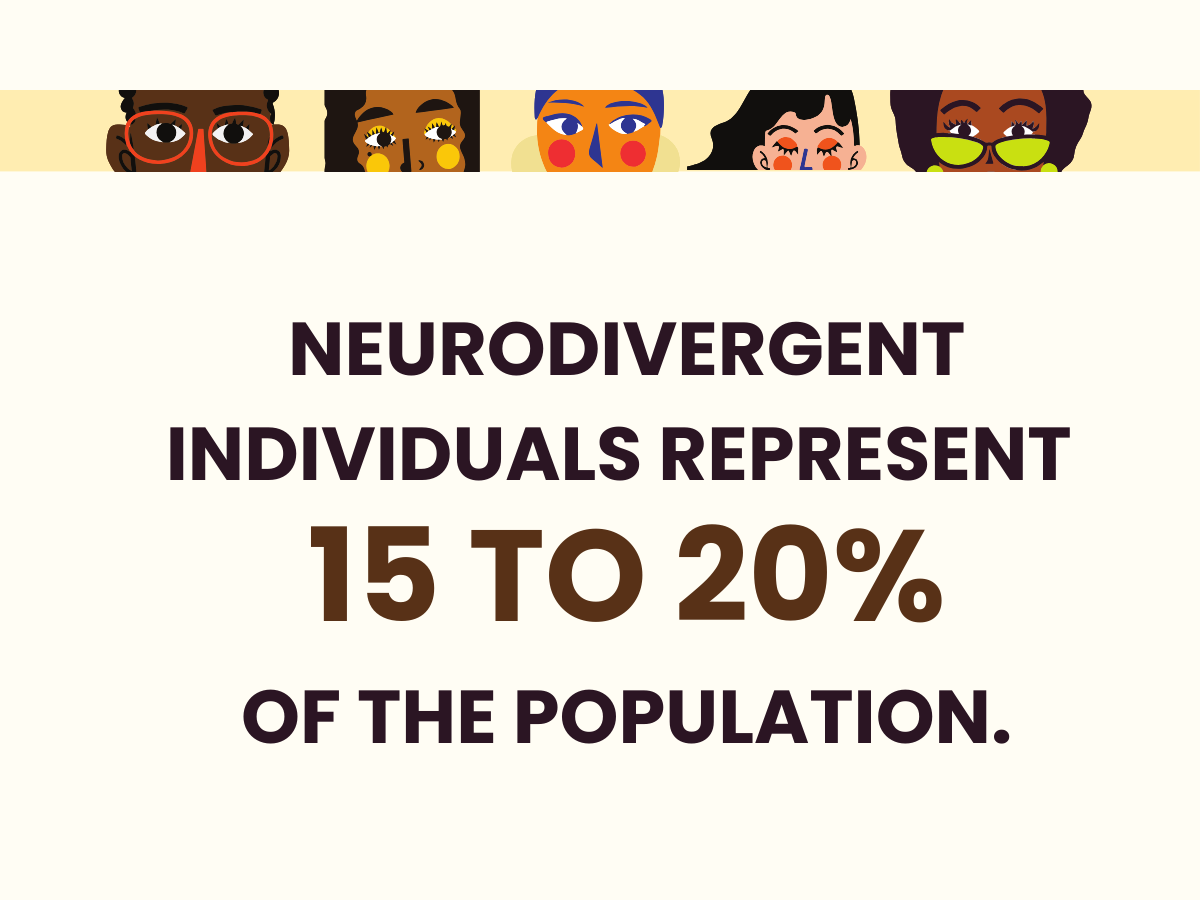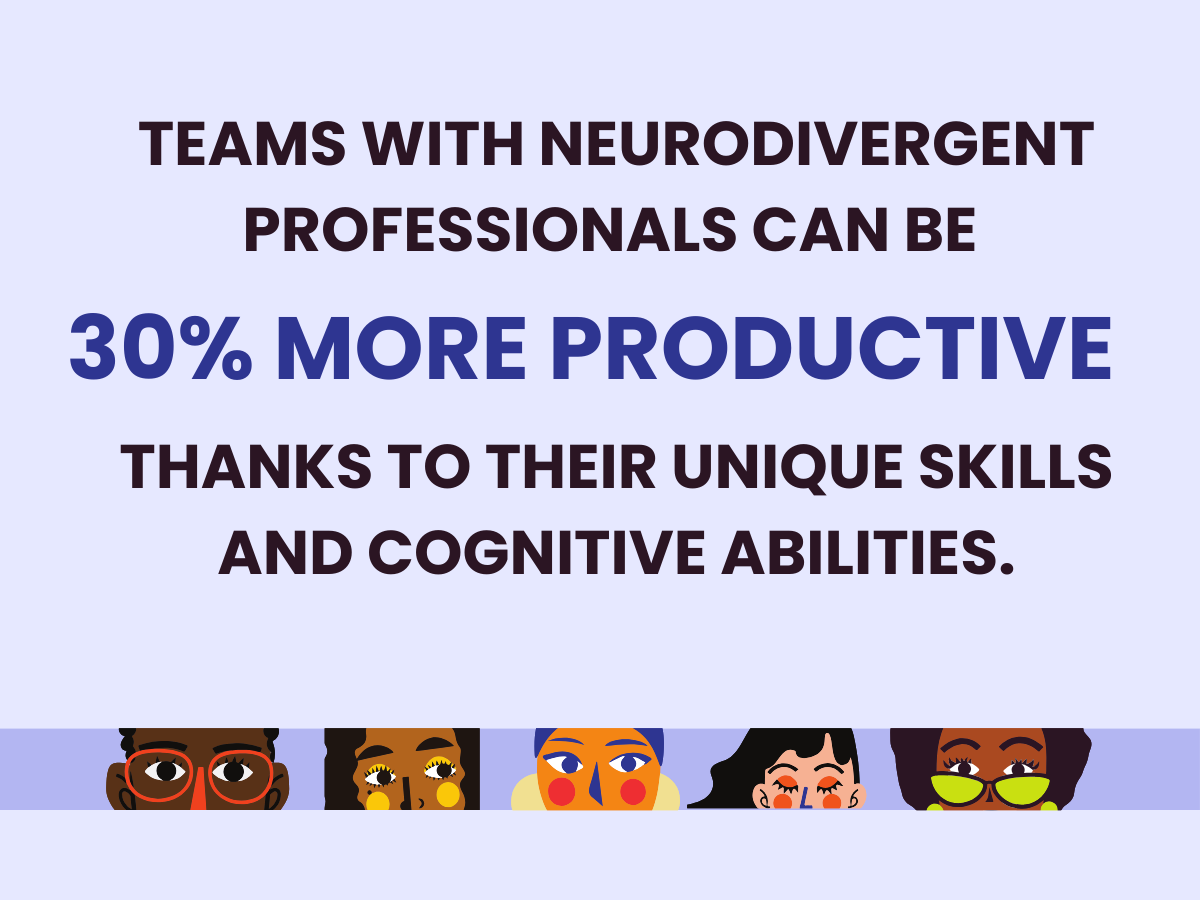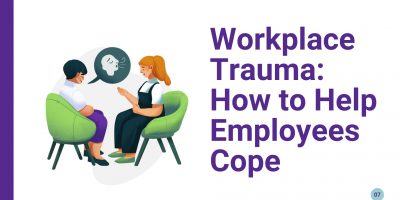
Depression at Work vs. Work Depression
Is there still a long way to go in fostering a culture of empathy where depression at work and work depression are viewed and treated with the same respect and urgency as any other health issue?

Forward-thinking companies are increasingly recognizing the value of neurodiversity in the workplace.
Major corporations like Walgreens, Amazon, and Wawa have found success with neurodivergent workers, yet the unemployment rates of this minority remain high.
Bias, outdated hiring methods, cultural barriers, and lack of accommodation still hinder progress.
The good news, is that we’re witnessing an optimistic shift that creates more opportunities and breaks down barriers. Employers are updating their diversity policies, providing reasonable accommodations, and investing in mental health programs for better support.
So, what comes next?
In this Shortlister article, we explore different aspects of the concept, including the benefits, challenges, and strategies for supporting neurodiversity in the workplace, all to help organizations harness the full potential of a truly diverse workforce.
So, what is neurodiversity in the workplace?
Before answering, we must define the concept to understand its impact on the work environment.
Harvard Health depicts neurodiversity as “the idea that people experience and interact with the world around them in many different ways.” This non-medical term suggests that there isn’t a right or wrong way of thinking, learning, or behaving but a different one for each person, which shouldn’t be seen as a deficit.
However, it’s important to point out that neurodiversity also refers to neurodevelopmental conditions, such as autism, ADHD, OCD, dyslexia, and other learning disabilities.
Literature calls people with these conditions “neurodivergent,” based on how their brains process information differently from the average person or the “neurotypical.”
Research exploring neurodiversity and its impact on working adults estimates that neurodivergent individuals represent 15 to 20% of the population.
Many are of working age.
Thus, when we speak of neurodiversity in the workplace, we refer to the inclusion and support of all employees, including those with diverse neurological conditions.
In other words, it means creating an environment where neurotypical and neurodivergent employees can thrive, leveraging all unique strengths and perspectives to enhance the organization’s creativity, problem-solving, and innovation.

If we look at the current state of neurodiversity in the workplace, there’s a clear distinction between what’s good and what needs improvement.
The main advantage is that we are now more aware.
Although neurodiversity isn’t the same as mental health, it loosely falls under its umbrella. When the Gen Z mental health crisis fueled this conversation in the workplace, neurodiversity also gained attention.
Shortlister’s mental health report reveals that mental health programs remain a highly sought-after workplace benefit, but companies are also adopting different strategies and practices to accommodate their neurodivergent employees.
The disadvantage, however, is that although roughly one in five people are neurodivergent, their employment rate remains way below the average.
As of May 2024, the unemployment rate in the U.S. stands at 4%.
Yet, for neurodivergent adults, some sources place this number as high as 80%.
It’s important to note that this statistic, part of a Harvard article exploring neurodiversity as a competitive advantage, is slightly outdated and mainly refers to those with more severe disorders who are not candidates for neurodiversity programs.
Given how diverse this group is, it’s difficult to pinpoint the exact scope, but it’s safe to assume that unemployment rates are higher among the neurodivergent population.
For example, another resource focusing solely on unemployment in adults with autism reveals that 85% of these individuals don’t have a job. At the same time, of those who had one, only 34% felt well-supported by their company, while 40% experienced employment discrimination.
This point leads us to another important issue when discussing neurodiversity in the workplace – common misconceptions and biases.
If there’s one thing that’s true about these statements, it is that none of them are.
No two humans are alike. Yet, the neurodivergent population is prone to generalization and stereotyping, leading to many misconceptions. As is the case with most minorities, bias can find its place in the workplace, from recruitment to hiring and accommodations.
In fact, according to the Institute of Leadership, half of all leaders and managers wouldn’t hire a neurodivergent person. The research shows a higher level of bias against ADHD/ADD and Tourette’s syndrome and slightly lower for people with autism, dyscalculia, and dyslexia.
Moreover, there was a significant lack of the neuro minority in diversity and inclusion policies, bullying and harassment procedures, and training within organizations. In fact, only 27% of respondents confirmed that their policies appropriately referenced neurodiversity.
With such concerning numbers, employers have a responsibility to ensure employees receive equal treatment, provide reasonable adjustments for neurodivergent staff, and review policies to include neurodiversity.
This is not only their moral obligation but also a legal one.
In workplace law and accommodation, neurodiversity is increasingly recognized and protected under anti-discrimination statutes like the Americans with Disabilities Act (ADA).
That’s because it encompasses a range of conditions like ADHD and autism spectrum disorder, each potentially qualifying as a disability under the ADA.
As such, these require unique workplace accommodations to facilitate equal employment opportunities. Examples may include modifications to workspace environments, provision of assistive technologies, or adjustments to work schedules and communication methods.
By embracing neurodiversity in their diversity, equity, and inclusion (DE&I) training and education programs, employers not only comply with legal obligations but also harness the diverse talents and perspectives that neurodiverse employees bring, thereby fostering a more innovative and inclusive workplace culture.
Mental Health Academy outlines the common neurodiverse strengths, talents, and specialist skills. Listed below, we used them as a starting point for exploring the benefits of neurodiversity in the workplace.
Neurodivergent individuals often bring unique perspectives and innovative solutions, leading to ideas and approaches that their neurotypical colleagues might not consider.
This three-dimensional thinking can help with complex problem-solving, making it important for fields requiring special awareness, such as design, architecture, and engineering.
High levels of focus can improve the quality and accuracy of work. In fact, research suggests that people with autism possess a greater ability to process information and are better at detecting critical information.
Enhanced pattern recognition presents an opportunity to better recognize and understand market trends, make predictions, and solve problems. It can be particularly valuable in data analysis, coding, or cybersecurity fields.
Despite many misconceptions, better verbal comprehension is associated with some forms of neurodivergence. As a workplace benefit, it can enhance team collaboration and client interactions.
Memory is one of the “superpowers” some neurodivergent individuals possess. That means they can take on tasks that require detailed knowledge and information retention, including legal work, medicine, etc.
Many neurodivergent individuals possess strong entrepreneurial skills and can think outside the box. Excellent examples of this are some of the world’s most famous entrepreneurs, including Microsoft founder Bill Gates, who has dyslexia; Virgin Airlines founder Richard Branson, who has dyslexia and ADHD; and Tesla and SpaceX CEO Elon Musk, who has Asperger’s syndrome.
Finally, specialist reading, drawing, and music skills can contribute to diverse work environments, benefiting creative industries, publishing, and arts.
Yes, neurodiversity has many “benefits.”
But the reality is that, right now, there are just as many challenges.
We already explored how misconceptions and biases can lead to employment barriers. However, the challenges of neurodiversity in the workplace expand beyond this.
Stephanie Kukoyi, Senior People Scientist at Culture Amp, discusses these in the webinar Neurodiversity – Creating an Inclusive Workplace.
According to her, the three main barriers are culture, accommodation, and access to learning and development or lack thereof.
As these three intertwine, employers who want to make a difference are faced with a challenge – how to support neurodiversity in the workplace.
Companies are making efforts to diversify the workplace.
Statistics exploring the business impact of corporate diversity show that 85% of CEOs with a DE&I strategy have experienced better performance. Inclusive teams were also 35% more productive, and companies with diverse executive boards had 53% higher returns on equity.
But where does neurodiversity fit in all this?
Teams with neurodivergent professionals can be 30% more productive thanks to their unique skills and cognitive abilities, reveals Deloitte in its quest to communicate why to hire neurodivergent workers.
Yet, despite its apparent benefits, the neurominority is often a missing component of DE&I initiatives.
As the workplace advances, prioritizing their inclusion can close this gap. But embracing this aspect will require a shift in hiring practices, training, and workplace culture.
Thus, the next step is understanding how to support neurodiversity in the workplace.

Employer strategies for supporting neurodiversity in the workplace should target the main pain points and resolve the current challenges, including bias, accommodation, and lack of opportunities. That way, the workplace can advance to greater inclusivity for all employees.
The most effective practices are case-specific and should focus on supporting the overarching strategies.
Examples include:
We recognize the challenges neurodiverse individuals face in the workplace can shift and evolve. Thus, as part of their practice for supporting neurodiversity, it is beyond vital for organizations to also ensure:
Finally, above all, employers should exemplify kindness, patience, and understanding.
Many companies have taken proactive steps to incorporate neurodiversity into their workforce strategies, demonstrating the significant benefits of such initiatives.
Autism Spectrum News explores the corporations that run some of the largest U.S. neurodiversity hiring programs, including SAP, JP Morgan Chase, Microsoft, and EY.
Their findings show that SAP has employed neurodiverse individuals in HR, operations, consulting, and software engineering roles since 2013, boasting a remarkable 92% retention rate.
Similarly, JPMorgan Chase, which launched its program in 2015, employs neurodivergent professionals in technology-focused roles across eight countries and maintains a high 95% retention rate.
Also launching its program in 2015, Microsoft has hired neurodiverse employees across various U.S. locations, primarily in technological roles. The company aims for international expansion and has a 92% retention rate.
Starting in 2016, EY has employed neurodiverse professionals in roles centered on AI, cybersecurity, and data analytics, achieving retention rates exceeding 90%.
These case studies are just the tip of the iceberg, as many companies have since invested in a diverse workforce. However, they are excellent examples of how embracing neurodiversity can enhance innovation and problem-solving and foster a more inclusive and productive workplace culture.
Employers are embracing neurodivergence, and why wouldn’t they?
After all, the workforce has always been a fusion of cultures, opinions, personalities, and ideas, making it rich with innovation and creativity.
As neurodiversity in the workplace becomes more prominent, what companies do next will shape the future of inclusive employment practices.
Better accommodation and policies, increased awareness, and leadership support are steps in the right direction for employers who want to explore the opportunities further and unlock the full potential of neurodiverse talent.
Content Writer at Shortlister
Browse our curated list of vendors to find the best solution for your needs.
Subscribe to our newsletter for the latest trends, expert tips, and workplace insights!

Is there still a long way to go in fostering a culture of empathy where depression at work and work depression are viewed and treated with the same respect and urgency as any other health issue?

Learn to recognize workplace trauma early on, address it correctly, and support struggling employees throughout their emotional recovery.

Gain a comprehensive understanding of current trends, challenges, and innovative approaches to support mental well-being in today’s fast-paced work environments.

Gain valuable knowledge on the prevalence, demographics, and impact of depression, providing a deeper understanding of the challenges faced in today’s society.
Used by most of the top employee benefits consultants in the US, Shortlister is where you can find, research and select HR and benefits vendors for your clients.
Shortlister helps you reach your ideal prospects. Claim your free account to control your message and receive employer, consultant and health plan leads.